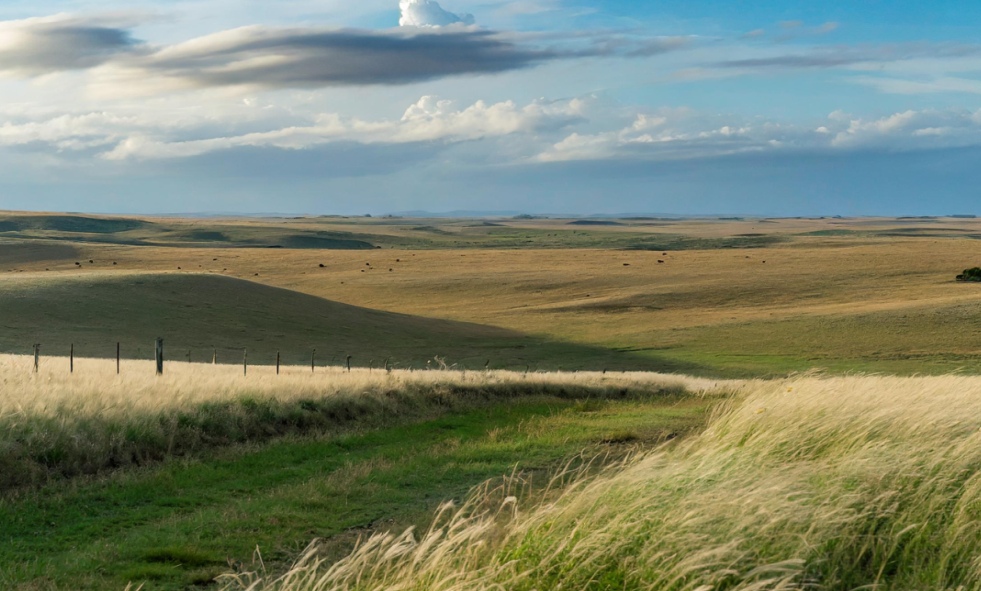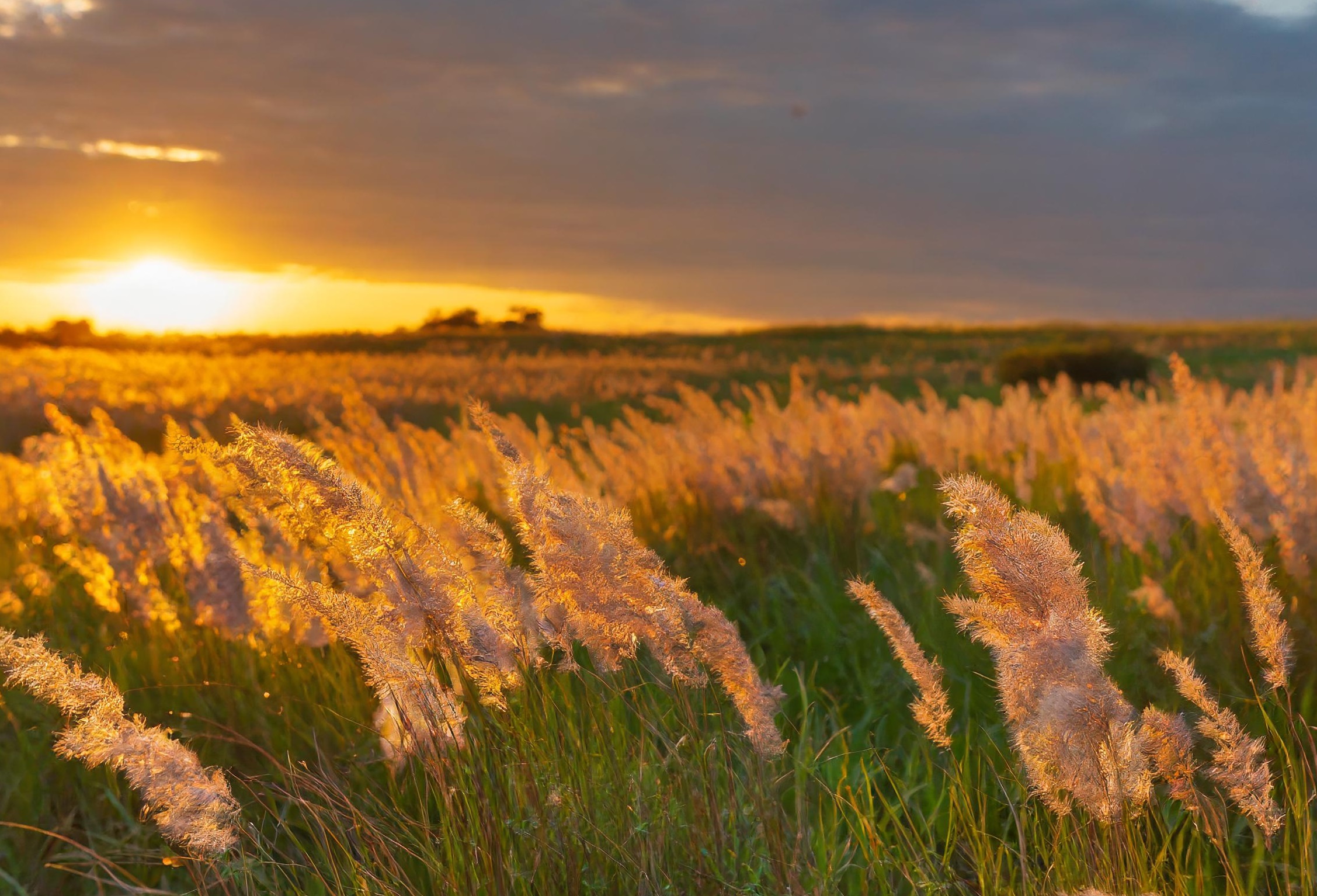The Prairies and the Pampas are both extensive grassland regions located in different parts of the world. They are flat, fertile, and dominated by grasses, but they are situated on different continents and have distinct characteristics.

Table of Contents
Prairies Grassland
Location: The Prairies are vast grasslands primarily located in North America, covering parts of the United States and Canada. They extend from the Rocky Mountains in the west to the forests of the eastern United States and Canada.
Characteristics: Prairies are characterized by expansive, flat, and gently rolling landscapes with fertile soil. They have a continental climate with hot summers and cold winters. The vegetation is dominated by grasses, but you can also find wildflowers and some shrubs. Tallgrass, mixed-grass, and shortgrass prairies are the three main types, each with distinct vegetation based on rainfall and temperature patterns.
Flora and Fauna: Prairies are home to a diverse array of plant and animal species. Bison, elk, pronghorn, and various species of rodents and birds inhabit these grasslands. Before extensive agriculture and settlement, the Prairies were home to vast herds of bison.
Pampas Grassland
Location: The Pampas are extensive plains in South America, primarily in Argentina, Uruguay, and southern Brazil. They are one of the most important agricultural regions in the world.

Characteristics: The Pampas are vast, flat plains with fertile soil, making them ideal for agriculture. The climate is temperate with distinct seasons, similar to the Prairies. The landscape is dominated by grasses, but you can also find some shrubs and trees along watercourses.
Economic Importance: The Pampas are a major agricultural region, known for livestock farming and grain production. Cattle ranching is particularly significant, and the Pampas are one of the world’s leading beef-producing areas. Wheat, corn, and soybeans are also cultivated in this region.
While the Prairies and Pampas share common features as grasslands with fertile soil, they are located on different continents and have unique ecological and cultural contexts shaped by their respective histories and human activities.
Comparison
| Feature | Prairies | Pampas |
|---|---|---|
| Location | North America (U.S. and Canada) | South America (Argentina, Uruguay, Brazil) |
| Climate | Continental with hot summers, cold winters | Temperate with distinct seasons |
| Topography | Flat or gently rolling landscapes | Vast, flat plains with some undulations |
| Soil Fertility | Fertile soil | Fertile soil, ideal for agriculture |
| Vegetation | Dominated by grasses; tallgrass, mixed-grass, shortgrass prairies | Grasses with some shrubs and trees along watercourses |
| Wildlife | Historically home to vast herds of bison; diverse fauna including rodents, birds, and large herbivores | Cattle ranching is significant; wildlife includes rodents, birds, and livestock such as cattle |
| Economic Activities | Agriculture (grain production, livestock farming) | Major agricultural region; leading producer of beef; grain cultivation (wheat, corn, soybeans) |
| Cultural Significance | Played a crucial role in Native American cultures; later became important for agriculture and settlement | Integral to the gaucho culture; cattle ranching is a prominent aspect of local identity |
| Notable Features | Flint Hills (Kansas), a region known for its tallgrass prairie; historically, the Bison Belt | Pampas is one of the most important beef-producing regions; vast expanses of grasslands used for cattle ranching |
This table provides a concise overview of the key characteristics of the Prairies Pampas grassland.